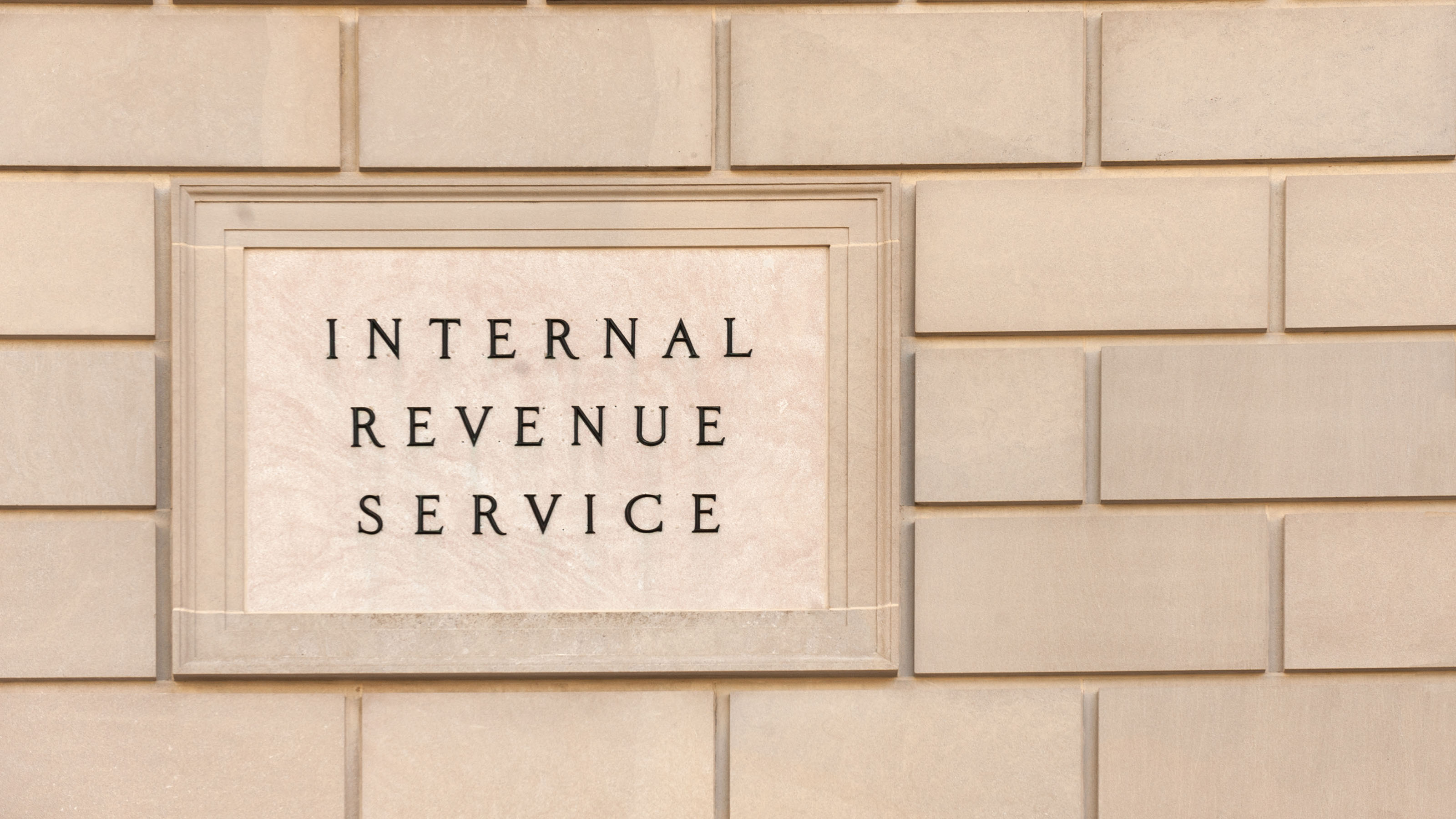Will Monthly Child Tax Credit Payments Lower Your Tax Refund or Raise Your Tax Bill?
Everyone loves receiving large sums of money from Uncle Sam. But people who take advance child tax payments may take a hit on next year's tax refund.


Millions of people have already received their first of six monthly child tax credit payments. Depending on your household income, these payments can be as high as $300 a month for each child under the age of 6 and $250 each month for child 6 to 17. That's an extra $1,800 in your pocket for a younger child if you get the full amount for all six months.
But will these monthly child tax credit payments decrease your tax refund when you file your 2021 return? Or will the payments increase your upcoming tax bill? Some families count on a big tax refund each year to make large purchases or simply to provide a financial cushion (although we don't recommend this strategy, since it means you're basically giving the government an interest-free loan). Other people will do anything to avoid having to write a sizeable check to the IRS when they file their tax return. Unfortunately, though, if you're receiving monthly child tax credit payments, you might be sacrificing your big refund and/or setting yourself up for a hefty tax bill next year.
Changes to the Child Tax Credit for 2021
Before getting into how your future refund or tax bill may be affected by the monthly payments, let's go over a few important changes to the child tax credit that apply for the 2021 tax year. First, thanks to the American Rescue Plan enacted in March, the maximum child tax credit for 2021 is $3,000 per child 6 to 17 years old and $3,600 for children 5 years old and younger. Last year, the credit for children below the age of 17 was just $2,000.
From just $107.88 $24.99 for Kiplinger Personal Finance
Become a smarter, better informed investor. Subscribe from just $107.88 $24.99, plus get up to 4 Special Issues

Sign up for Kiplinger’s Free Newsletters
Profit and prosper with the best of expert advice on investing, taxes, retirement, personal finance and more - straight to your e-mail.
Profit and prosper with the best of expert advice - straight to your e-mail.
The American Rescue Plan also requires the IRS to pay half of your total credit amount in advance through monthly payments issued from July to December. The IRS will base these payments on the information it pulls from your 2020 or 2019 tax return. You'll claim the remaining half of the credit on your 2021 tax return.
This means that you'll subtract every dollar you received from July to December from the total credit you're entitled to claim and then report the excess amount, if any, as a child tax credit on your 2021 return. (Use our 2021 Child Tax Credit Calculator to see how much your monthly payments will be and what should be left over to claim as a credit on your 2021 tax return.)
Finally, the credit was also made fully "refundable" for the 2021 tax year. That means everyone is eligible for a tax refund if the credit is worth more than your tax liability. Before 2021, the refundable portion of the child tax credit was limited to $1,400 per eligible child.
Congress made other changes to the 2021 child tax credit, too. For complete coverage of the changes for 2021, see Child Tax Credit 2021: How Much Will I Get? When Will Monthly Payments Arrive? And Other FAQs.
How Monthly Child Tax Credit Payments Will Impact Your 2021 Tax Return
Unlike stimulus checks, the monthly child tax payments are simply early payments of a credit that already exists. It's not "extra" money – it's just an advance. This means that, instead of claiming the full amount of the credit when you file your 2021 tax return, you'll only claim half that amount if you receive a full contingent of monthly payments, since the other half will have been paid to you in advance this year. So, for example, a family with a 3-year-old toddler who takes the monthly payments will receive $1,800 in advance and then claim an $1,800 child tax credit when they file their 2021 tax return next year.
If the child tax credit you claim on your tax return is chopped in half (or otherwise reduced), it will cut into your tax refund or boost your tax bill. That's because tax credits are taken into account after your tax liability is calculated. As a result, every dollar you can claim as a child tax credit on your tax return is subtracted from the tax you owe. Since the 2021 credit is fully refundable, you'll get a tax refund if the credit amount you claim on your return is greater than your tax liability. If the credit amount available is less than your tax liability, you'll still see a reduction of the tax you owe. But if the credit amount that you're allowed to claim on your tax return is lowered (e.g., cut in half), then that also means there's less money subtracted from the tax you owe. That translates into a smaller refund or a larger tax bill.
To illustrate the point, assume the family mentioned above with a toddler has a tax liability of $2,000 on their 2021 tax return. Their total child tax credit for 2021 is worth $3,600. Since they received half their credit ($1,800) in advance through monthly payments from July to December, they can subtract the other half from their $2,000 tax liability on their return. That leaves them with a $200 tax bill ($2,000 - $1,800 = $200). However, if they didn't receive the monthly advance payments, they could have subtracted the full credit ($3,600) from their tax liability, which would have resulted in a $1,600 tax refund ($2,000 - $3,600 = -$1,600).
In the end, it's not that you get less money. It's just a question of getting it sooner rather than later. For some families, it's better to hold off on the advance payments and take the full credit when they file their 2021 tax return. It all depends on whether you need the money now, or whether you're counting on a big refund or low tax bill when you file your return next year.
The Solution: Opting Out of Monthly Child Tax Credit Payments
Fortunately, there's a way to lessen the impact of monthly child tax credit payments on next year's tax refund or tax bill – you can opt-out of the advance payments. If you want to opt-out, the IRS has an online Child Tax Credit Update Portal where you can unenroll from advance payments. That way, you'll be able to claim the full credit when filing your 2021 tax return.
The IRS sent the first round of advance credit payments to eligible families on July 15. Additional payments will arrive on August 13, September 15, October 15, November 15, and December 15. There are monthly opt-out deadlines if you want to cut off payments before the next one arrives. To opt-out before you receive a certain monthly payment, you must unenroll by at least three days before the first Thursday of the month in which that payment is scheduled to arrive (you have until 11:59 p.m. Eastern Time).
If you miss the deadline and you're eligible for a monthly payment, you'll continue to get scheduled payments until the IRS processes a request from you to unenroll from monthly payments. If you do opt-out of the monthly payments now, you won't be able to re-enroll until at least late September 2021. If you're married and file a joint tax return, your spouse also needs to opt-out since unenrolling only applies on an individual basis. If your spouse doesn't unenroll, you'll still get half of the joint payment you were supposed to receive with your spouse.
There are other reasons why you might want to opt-out of the monthly payment, too. For instance, if you're in a shared custody situation and you won't be able to claim your child as a dependent for 2021, your income is substantially higher in 2021 when compared to last year, or you're worried about having to pay back some of the monthly payments. For more information on the opt-out option, see When to Opt-Out of Monthly Child Tax Credit Payments.
Profit and prosper with the best of Kiplinger's advice on investing, taxes, retirement, personal finance and much more. Delivered daily. Enter your email in the box and click Sign Me Up.
William formerly worked as a Tax Editor at Kiplinger beginning in 2021. Before that, William worked in the tax world for over 15 years. He spent time working at the IRS, the U.S. Tax Court, and several private law firms where he dealt with both individual and corporate clients. He has a B.A. in Journalism from the University of Georgia, a J.D. from the Loyola University College of Law, and an LL.M. in Taxation from the Northwestern School of Law.
-
 Holiday Tax Scams: 'Tis the Season to be Wary
Holiday Tax Scams: 'Tis the Season to be WaryTax Scams Navigating tax tricks of the holiday season may be daunting, but don't let that destroy your festive spirit
-
 Metro by T-Mobile Is Giving Away This Samsung Galaxy A16: Which Plans Are Eligible?
Metro by T-Mobile Is Giving Away This Samsung Galaxy A16: Which Plans Are Eligible?Metro by T-Mobile is offering free Samsung Galaxy A16 phones on eligible plans right now. Here’s how the deal works.
-
 I Drive and Collect Classic Cars: Here’s How I Got Started
I Drive and Collect Classic Cars: Here’s How I Got StartedAre classic cars a hobby or an investment strategy — or both? Either way, the vintage car scene is much cooler and more affordable than you think.
-
 Holiday Tax Scams: 'Tis the Season to be Wary
Holiday Tax Scams: 'Tis the Season to be WaryTax Scams Navigating tax tricks of the holiday season may be daunting, but don't let that destroy your festive spirit
-
 Retirees in These 7 States Could Pay Less Property Taxes Next Year
Retirees in These 7 States Could Pay Less Property Taxes Next YearState Taxes Retirement property tax bills could be up to 65% cheaper for some older adults in 2026. Do you qualify?
-
 Estate Tax Quiz: Can You Pass the Test on the 40% Federal Rate?
Estate Tax Quiz: Can You Pass the Test on the 40% Federal Rate?Quiz How well do you know the new 2026 IRS rules for wealth transfer and the specific tax brackets that affect your heirs? Let's find out!
-
 Law Reversal Looming? Trump Eyes 2026 Gambling Winnings Tax Change
Law Reversal Looming? Trump Eyes 2026 Gambling Winnings Tax ChangeTax Deductions It's no secret that the IRS is coming after your gambling winnings in 2026. But how long will that last?
-
 5 Types of Gifts the IRS Won’t Tax: Even If They’re Big
5 Types of Gifts the IRS Won’t Tax: Even If They’re BigGift Tax Several categories of gifts don’t count toward annual gift tax limits. Here's what you need to know.
-
 The 'Scrooge' Strategy: How to Turn Your Old Junk Into a Tax Deduction
The 'Scrooge' Strategy: How to Turn Your Old Junk Into a Tax DeductionTax Deductions We break down the IRS rules for non-cash charitable contributions. Plus, here's a handy checklist before you donate to charity this year.
-
 IRS Says You Made a Tax Return Mistake? A New Law Could Help You Fight Back
IRS Says You Made a Tax Return Mistake? A New Law Could Help You Fight BackTax Law Updated taxpayer protections change what the IRS must explain on error notices and how long you have to respond.
-
 Tax Refund Alert: House GOP Predicts 'Average' $1,000 Payouts in 2026
Tax Refund Alert: House GOP Predicts 'Average' $1,000 Payouts in 2026Tax Refunds Here's how the IRS tax refund outlook for 2026 is changing and what steps you can take now to prepare.
